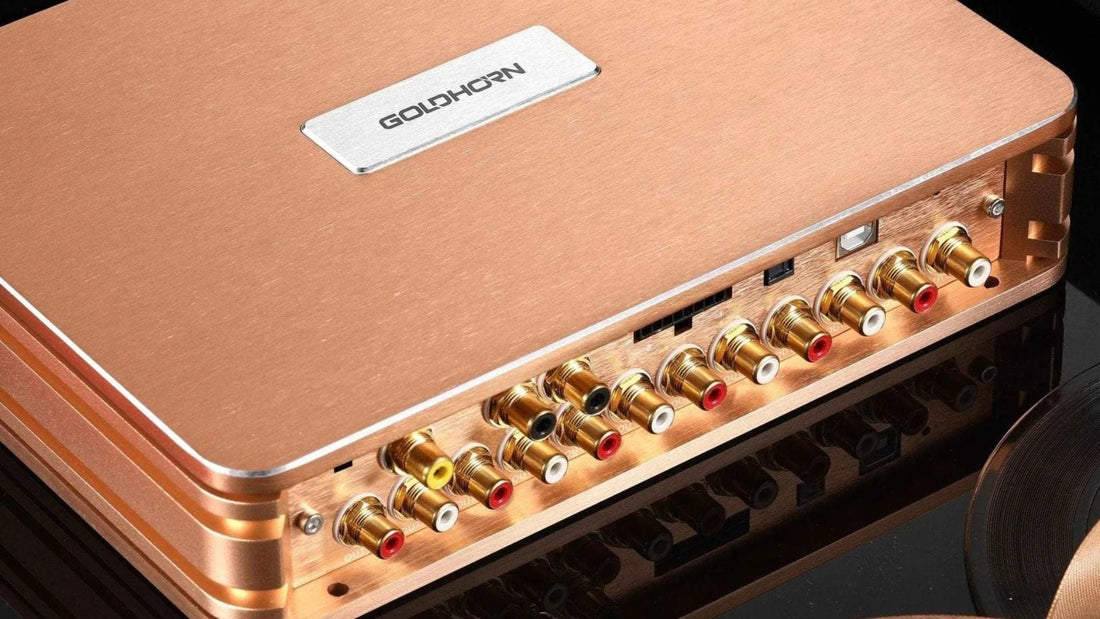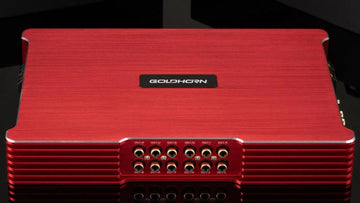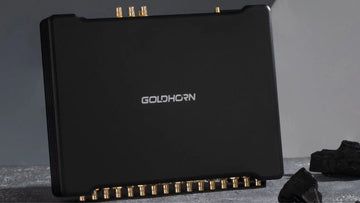
The Ultimate Guide to 12 Channel Digital Sound Processor
In the dynamic world of audio technology, the 12 Channel Digital Sound Processor stands as a pinnacle of innovation, offering unparalleled control and enhancement of sound quality. This sophisticated device is a game-changer for audiophiles, professional sound engineers, and casual listeners, allowing for intricate adjustments and fine-tuning across twelve channels. By providing such detailed manipulation of audio signals, users can achieve a custom, high-fidelity listening experience that caters to their specific preferences and the unique acoustics of any environment.
The allure of a 12 Channel Digital Sound Processor lies in its ability to transform and elevate the standard audio output into a rich, immersive sonic landscape. Whether you're optimizing a car audio system, refining a studio recording, or customizing the audio in a commercial space, the flexibility and precision offered by these processors ensure that every note and nuance is captured with clarity and depth. As we delve deeper into the capabilities and applications of these powerful devices, it becomes clear why they are considered an essential tool for anyone serious about achieving the best in audio performance.
Achieve high-quality sound tailored to your preferences. Start by exploring our Digital Sound Processor offerings.
Understanding the Basics of a 12-Channel Digital Sound Processor

For advanced audio customization of car and motorcycle stereo systems, a 12-channel digital sound processor is the way to go. Its user-friendly interface (UI) offers precise adjustments that can be controlled via PC, Android, or iOS apps. The adjustments can even be made down to milliseconds, making it an excellent choice for audiophiles who demand the best sound quality. This digital sound processor is essential for fine-tuning their vehicle's audio system for optimal performance.
The Role of a Digital Sound Processor in Audio Systems
A digital sound processor optimizes the audio frequency range for clear sound by enabling factory system integration, aftermarket system building, and versatility. The remote controller allows convenient operation, which is crucial for enhancing the audio interface and user experience. Additionally, DSPs provide audio streaming, which is ideal for high-quality sound systems.
Key Components of a 12-Channel Digital Sound Processor
Digital sound processing technology enables precise sound change. It incorporates RCA outputs for seamless audio integration. The 12-channel DSP integrates with smartphone and Bluetooth audio systems. It features a matrix crossover for fine-tuning audio channels. It also ensures factory system integration and aftermarket system-building capabilities.
Exploring Different Digital Sound Processors

Exploring the different types of Digital Sound Processors (DSPs) reveals various options tailored to specific audio needs and environments. The 12-channel Digital Sound Processor is just one specialized type, ideal for complex setups requiring multi-channel output.
Alpine PXE-0850X 12-Channel Advanced Wireless Digital Sound Processor

With the Alpine PXE-0850X, integration with factory systems is seamless. Enjoy wireless audio streaming and independent audio adjustment channels. This digital sound processor offers unmatched aftermarket system versatility. Experience top-tier audio performance with advanced wireless capabilities.
Goldhorn P2 DSP Pro | 12 Channel DSP/DSD Player

Integrating digital sound processor and DSD player features, the Goldhorn P2 DSP Pro offers factory system integration and aftermarket system building versatility. Experience seamless wireless audio streaming with this advanced audio processor.
Rainbow Audio DSP: IRON AP1200SE

The Rainbow Audio DSP, IRON AP1200SE, delivers advanced audio signal processing and offers factory system integration and aftermarket system building versatility. With independent channels for audio adjustment, it enhances audio customization and quality.
Importance of OEM Integration
When integrating audio systems, OEM integration plays a crucial role. It enables seamless integration of factory systems and enhances the versatility of aftermarket system building. The digital sound processor's wireless capability also supports audio streaming and smartphone integration, offering enhanced functionality.
The Value of Updated Software in Digital Sound Processors
Optimal audio system performance relies on updated software, enhancing the user interface and digital sound processor functionality. These updates also improve wireless, Bluetooth, and smartphone audio system integration. The seamless integration of new technology and enhanced features enhances the audio experience.
Unpacking the Concept of Real-Time Tuning
Real-time tuning enables dynamic adjustments to audio signals on the go, ensuring immediate enhancements to sound processing parameters. Digital sound processors have real-time tuning capabilities for precise audio adjustments, guaranteeing optimal audio quality in any setting. Instant application of audio settings is a key feature of real-time tuning.
The Power of Wireless Music Streaming

Wireless music streaming in modern sound processors has revolutionized how we experience audio. With features like HD player and UI enhancements, it offers a seamless user experience. Integrating social media platforms and quick shipping options has made it more accessible to users, setting new standards in the industry.
How to Stream Music Without a Head Unit
Streaming music wirelessly without a head unit is made possible through digital sound processors. Bluetooth or Wi-Fi connectivity facilitates direct music streaming, offering flexibility and compatibility with various devices. Users can seamlessly enjoy music without a head unit.
Benefits of Wireless Music Streaming in a Digital Sound Processor
Wireless music streaming in digital sound processors achieves enhanced audio system flexibility. It simplifies audio system integration. It offers a seamless user experience with convenient access to digital audio sources. Moreover, it enhances portability and connectivity, making the process more efficient and user-friendly.
Features to Consider of a Digital Sound Processor

When choosing a digital sound processor, consider technical specifications like the number of channels, signal-to-noise ratio, and frequency response for optimal performance. Also, explore features like UI design, compatibility with HD players, and PC integration.
What to Look for in DSP Features
When assessing technical specs for a digital sound processor, consider vital factors such as
- Digital Inputs
- Bands of equalization
- Crossover types
- Built-in Amplification
- Hi-Res Player
- Hi-Level inputs
- Remote Control
- Easy-to-use UI
- Bluetooth / WiFi
- App Control
Why Technical Specifications Matter
Understanding the technical specifications of a digital sound processor is crucial for achieving an ideal sound system. These specs determine the audio processing capabilities, impacting signal processing and customization. Comprehensive knowledge ensures informed decision-making for selection, creating a tailored, high-quality audio system.
Are All 12-Channel Digital Sound Processors the Same?
No, not all 12-channel digital sound processors are the same. Different brands and models offer varying features and capabilities. It's crucial to research and compare options. Factors to consider include audio quality, ease of use, and compatibility with existing equipment.
Frequently Asked Questions

Can a 12 channel digital sound processor be used with other audio equipment?
You can use a 12-channel digital sound processor with other audio equipment. For example, amplifiers and speakers. You can connect it to the amplifier using RCA cables or optical cables. The DSP allows for precise tuning of individual channels. This optimizes the overall sound quality. Compatibility with other audio equipment is important to ensure seamless integration.
Conclusion

A 12-channel digital sound processor enhances the audio experience in your vehicle. It allows you to fine-tune and customize the sound for the best quality. However, not all 12-channel digital sound processors are the same. When choosing one, consider factors like OEM integration. Also, consider updated software and real-time tuning capabilities. Wireless music streaming is a convenient feature to have. It lets you play your favorite tunes without a head unit. Also, pay attention to technical specifications. Get support from authorized dealers to enhance your experience.
In conclusion, investing in a 12-channel digital sound processor greatly improves your audio system. It gives you an immersive and enjoyable listening experience. Make sure experts install it properly. Explore the available options to find the perfect match for your needs.
Unleashing The Power Of A 10 Channel Digital Sound Processor

















